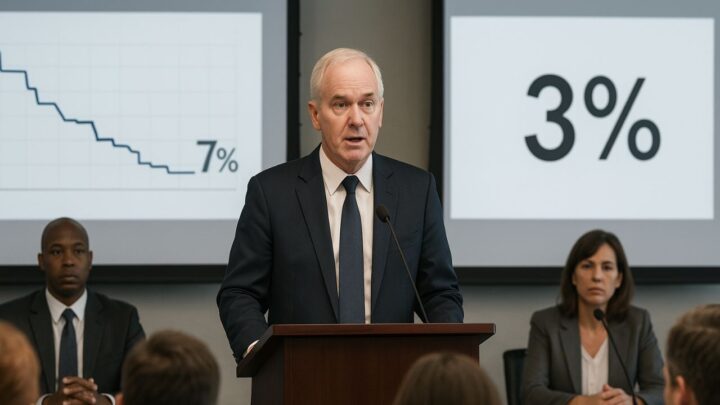In a surprising move, the central bank has announced a major policy shift this October by cutting the repo rate to 7% while introducing a new 3% inflation target. This dual action aims to boost economic growth, stabilize prices, and encourage borrowing across multiple sectors. The decision is expected to benefit both consumers and businesses, making loans cheaper and investments more attractive. Financial experts believe this strategic rate reduction could provide relief to millions of borrowers, especially in developing economies where inflation control remains crucial for sustainable growth.

Impact of the 7% Repo Rate on Borrowers and Investors
The reduction of the repo rate to 7% is a game changer for the economy, especially for individuals with home, vehicle, and business loans. Lower rates mean cheaper credit, allowing consumers to borrow more at reduced EMIs. For investors, this decision could lead to a shift toward equity markets as fixed deposit returns decline. Additionally, banks are expected to pass on the benefits to customers through reduced lending rates. This step will inject liquidity into the market, boosting sectors such as real estate, infrastructure, and manufacturing. Overall, it’s a confidence-building move toward economic recovery.
How the 3% Inflation Target Will Shape Future Policies
With the new inflation target set at 3%, the central bank aims to balance growth with price stability. This marks a lower tolerance range compared to previous years, signaling strict control over inflationary trends. The government’s focus is to maintain affordability while ensuring that economic momentum is not disrupted. Experts suggest this target could lead to stable consumer prices, benefiting households struggling with rising living costs. The new framework also ensures accountability and transparency in monetary policy decisions, ensuring that inflation remains within predictable limits for long-term financial planning.
Read Only : SASSA Pension Grant September 2025 — Full List of Amounts, Dates & Changes
Global Reaction to the Repo Rate Cut and Inflation Target
International markets have responded positively to the October announcement, viewing it as a proactive measure to strengthen the domestic economy. Financial analysts highlight that the move aligns with global efforts to maintain moderate inflation while stimulating post-pandemic recovery. Neighboring countries and trading partners are expected to observe similar policy actions to stabilize their own economies. This decision may also enhance foreign investment inflows, as lower interest rates often attract global capital seeking emerging market opportunities. The combined effect of a 7% repo rate and 3% inflation goal sets a new tone for economic confidence and policy direction.

Forecast for the Next Quarter: Growth, Inflation, and Employment Trends
Looking ahead, experts predict gradual growth acceleration as borrowing increases and businesses expand operations. The lower repo rate could lead to higher spending and investment activity in both public and private sectors. Inflation is expected to remain under control due to the strict 3% target, ensuring that price levels stay stable. Employment rates may see improvement as industries gain confidence to hire more workers. However, economists caution that any external shocks—like commodity price hikes—could test the stability of this policy. Still, the October decision is widely seen as a forward-looking economic reform.
| Policy Element | Previous Value | New Value (October 2025) | Expected Impact |
|---|---|---|---|
| Repo Rate | 8.5% | 7.0% | Cheaper loans, increased borrowing |
| Inflation Target | 4.5% | 3.0% | Controlled prices, higher purchasing power |
| Loan EMIs | Higher | Reduced | Financial relief for borrowers |
| Investment Flow | Moderate | Expected to Rise | Boost to equity and business sectors |
| Consumer Spending | Stable | Likely to Increase | Higher demand in retail and housing |
Read Only : SASSA R500 Grant in 2025 South Africa Income Limits – Payment Windows, Eligibility Requirements
FAQs
Q1: What is the new repo rate announced in October 2025?
Ans: The repo rate has been reduced to 7%.
Q2: What is the inflation target set by the government?
Ans: The new inflation target is 3% for 2025 onwards.
Q3: How will this affect borrowers in the country?
Ans: Borrowers will benefit from reduced EMIs and cheaper loans.
Q4: What sectors are expected to gain the most?
Ans: Real estate, manufacturing, and retail sectors are likely to benefit significantly.
How does the repo rate cut to 7% affect the economy?
It aims to stimulate economic growth and control inflation.




